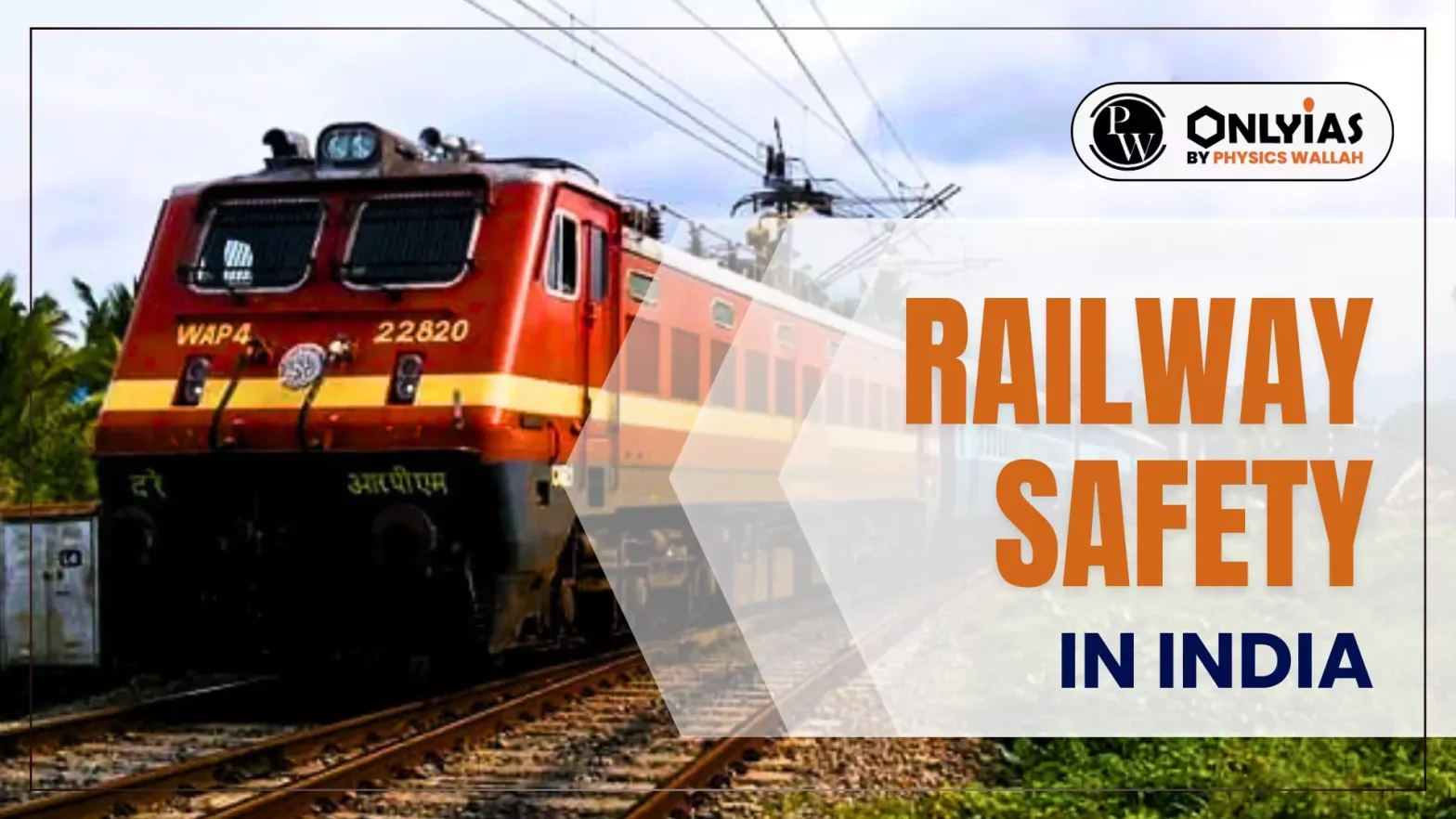A recent signal failure led to Mysore-Darbhanga Express train to collide with a stationary goods train near Gummidipoondi, Tamil Nadu. Though there were no casualties, this incident highlights the need for stronger accident prevention measures.
Mysore-Darbhanga Express Train Collision
- Experts point to outdated infrastructure, increased congestion, and non-modernized signal systems as contributing factors.
- The government is also exploring a possible terrorist link as the accident occurred when a train was mistakenly diverted onto the loop line, resulting in a collision.
Enroll now for UPSC Online Course
Safety Measures for Indian Railways
- Kavach System: It is an automatic train protection (ATP), a proposed solution to enhance railway safety by preventing collisions.
- It automatically applies brakes if two trains are on the same track, if a signal is overrun, or if a train is overspeeding.
- This ATP system can be installed network-wide over a decade and would cost approximately 2% of the annual railway capital expenditure.
- Improving Staff Working Conditions: Recent train accidents point to human error, often aggravated by poor working conditions, such as the lack of basic facilities for locomotive pilots.
- A comprehensive approach must focus on improving basic facilities such as functional toilets etc.
- Upgrading Signal System: Alongside this, overhauling outdated signalling systems and improving on-the-ground vigilance remains crucial.
- Safety also depends on the working conditions of locomotive pilots, whose well-being directly impacts their focus and ability to ensure safe operations.
Challenges Facing Indian Railways
- Implementation Challenges: The Kavach system and other safety measures have not been effectively implemented across the entire rail network, limiting their impact.
- Economic Challenges: Slowing revenue growth and increased reliance on budgetary allocations are straining railway finances, making large-scale investments difficult.
- Overutilized Routes: High-density routes, like Delhi-Prayagraj, are overburdened, with limited track availability, further straining capacity.
- Freight Dependence: Indian Railways relies heavily on coal freight for revenue, making it vulnerable to decarbonization pressures.
- While passenger services often operate at a loss, the burden of cross-subsidizing them through freight has led to high freight rates, making it difficult for Railways to compete with other transport modes.
- COVID-19 Impact: Indian Railways has yet to regain its pre-pandemic market share, affecting both passenger and freight services.
Way Forward for Indian Railways
- Dual Approach: Implement safety measures while enhancing counter-terrorism investigations to safeguard railways.
- Balanced Approach: Focus on achieving a balance between safety, modernization, and economic viability, promoting self-sufficiency and reducing dependence on the central government.
- Transparency: Maintain transparency by clearly communicating the reasons behind accidents, ensuring accountability and trust among stakeholders.
Check Out UPSC CSE Books From PW Store
Conclusion
Enhancing Indian Railways requires a comprehensive approach that integrates technological advancements and better working conditions. Prioritising modernization and transparency will mitigate risks, build public trust, and ensure the railway network’s resilience against future challenges.
![]() 14 Oct 2024
14 Oct 2024


